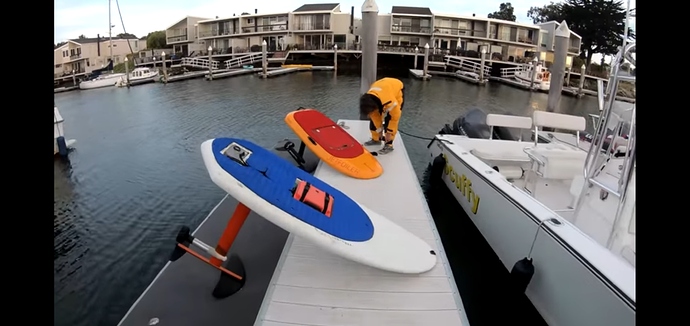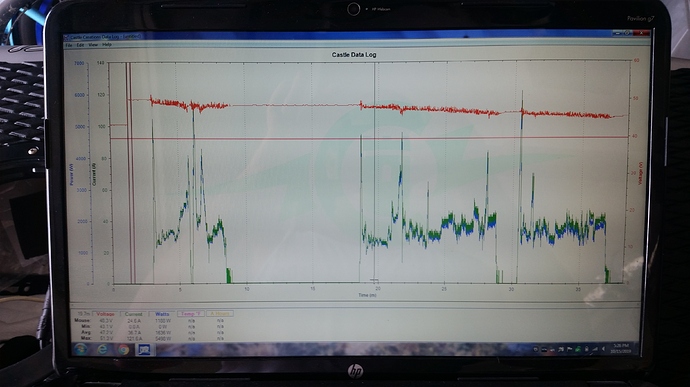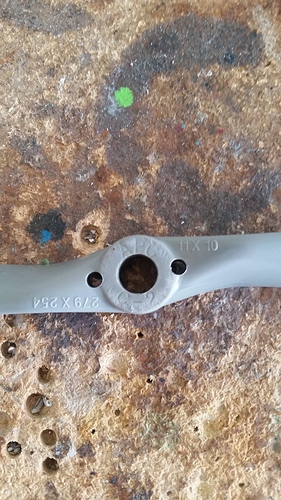I think a bit of further proof that there’s not much point in reinvestigating this type of propeller should be the fact that Don and jetfoiler use the newer designs now instead:
Video link top of this Thread
Why not follow? Did Don and jetfoiler investigate this airplane prop shape?
Unless you have some real numbers to show us I think this path deserve to be investigated.
And just a photo of jetfoiler does not prove anything, I made maaaaany different kinds of propulsion’s systems (direct inrunner, geared, outrunner… since 2017)
I made about 25 propellers, you can find me one day testing a propeller and make a photo of it, it won’t mean it is the best propeller and other models need to be forgotten.
This kind of comment is dangerous and will kill the forum.
I remember starting myself my first motor with a 6374 out runner when the forum started and seeing people saying this setup would not work because of this and that. Finally it worked like a charm and I derivated two other units from this.
Back to the topic few weeks ago. This forum I remember seeing a two human powered hydrofoil going 35kmh+ with this kind of propeller which is I think great efficiency evidence.
It’s been pretty solidly investigated in the ROV community and they’ve gone in a different direction. There some forums with all the mathematics for the ROV’s etc. But it’s also important to remember that they are also using slower speeds and lower rake props etc.
I investigated these props when I was designing waterproof drones that could potentially be used both out and in water. I found that the props that worked well in air worked worse in water and visa versa.
Then of course there’s the endless boat forums for fast, slow and electric trolling motors. When you read through them you will eventually end up back to similar props like FR is producing for the speeds and applications we need.
The photo of the jetfoiler board is their latest iteration they ride with pacificmeister. The first photo in this thread was their first version. If that first prop outperformed the latest versions then that would become their standard.
Riding a prop of 240mm also puts you 10cm lower into the water. That more than 10% mast length wasted.
I’m not stopping anyone trying to prove it’s better. But I don’t think you will. I think the conclusions will just come to the same ones as the other various forums.
There was (is) one guy in the forum (like almost 2 years aga) who did the first tests with outrunners for efoils. He also build up a test basin for measuring the thrust vs consumption. He wrote that with the air propeller he had the best results. I can’t find him in the forum. He had to quite because outof personal reasons.
I found it:
So when you read that whole thread it came down to the prop was efficient for slower speed foils and you had to use a big board etc.
What is really interesting is that his best performing boat style prop was the Solas which I already have a 3d printed prop that’s outperforming it. Then the the FR prop way outperforms both of those.
That equals my tests…
2 Blade for the win 
10" at 50kV vs my 6" 80kV Motor (should be 6.25 to equal the 10" 50kV)
But all over all, i tried many props, 2, 3, 4 Blade, Diameter 120-160mm, Low, medium and high Pitch, all over all, If parameters are in a certain range, it doesnt matter that much.
I have a good working smaller 4blade, a good 2Blade. A medium 3 Blade, that performs Well as Allrounder. All work accepable, the diffences are not huge. Some are better at low speed, some better at higher speed.
That’s pretty much the crux of it.
Do you want slow speed efficiency. Then select a prop for it…
Do you want high speed, then you need something different.
Also a massive consideration is how much of the mast do you want to sacrifice to prop size.
Numbers will be up one day ( my metr at works now ) just missing time right now to do everything … but I have a 3 blade apc airplane prop lying around for 1 year now , will try it for sure and probably a 2 blades as well …
Ran an 11x10 apc prop cut down to 8 inch diameter on my 80100 80kv with my naish thrust wing. Prop was more efficient once on foil but took a lot more amperage to get up on foil.
As much as 120amps to get on foil and as little 25 amps foiling. Speed felt the same as my other 3 blade prop but I did not have a way to measure speed. My 3 blade prop takes 60 amps to get on foil and around 38 amps foiling.
I feel the 3 blade prop I was using was a better pick overall.
I know the mounting of the apc prop is not very hydrodynamic. Just needed something quick.
If you check all the outboards and powerboats propellers, except for the surface piercing type, they all look the same. They are way thinner and extremely “cambered” than airplane ones.
There should be a reason for that.
But, as marine engineers already realized lately, electric propulsion is all a different beast, boat hull (planning hulls) should be tuned for flat curve torque of such motors which makes legit to think about a similar new approach in prop design. Still…air is not water, efoil ain’t a tug boat, etc. etc.
Plus…if nobody from time to time ever tests anything weird and unlikely, humanity would stand still century after century till the end of time. So welcome thin cord blades test 
Like what jezza said regarding reynolds #, my tri was spinning around 13-14 k rpm. Around 800kv if i recall well onn 3/4s. Also, very fragile build for water 
I totally agree. All the human powered stuff is designed for minimum power and maximum efficiency which is what we also need when using batteires which compared to gasoline have a fraction of the run time.
Great point thank you!!!
HEY awesome to see some numbers.
If getting on foil represents 5% of the run time, it is worth taking the hit of 120 amps briefly so you can run 38% longer once foiling/planing…
That’s a Wow  ! Thanks @s9tim and your data logging system !
! Thanks @s9tim and your data logging system !
How many seconds does it take to be on plane ?
We could program a gradual ramp up on the remote to reduce the current demand and use weaker ESCs, motors and batteries. Then the limit would be human: could an experienced rider bear a 6-8 second rise time before reaching the plane ?
With a 240mm diam prop, you can be 3-5 cm lower than a FR nozle, if you lower the fuselage aft part in case of a pusher (lower the fuselage front part in case of a puller). We need to separate the fuselage into 2 pieces with a flush piece of plastic looking like a piece of mast and that can be 3D printed.
And it is a "quick and dirty test " without a profile that is really suited for water like a H105. We can probably do lower than that. What is nice with the thin chord blade props is that we can hand make them 100% carbon more easily than a FR style one… (except @virus of course) with 10-15 strips of carbon plus epoxy into a 250mm long 3D printed mold. Not any 3D printer can print such a mold though 
What do you think about to try those and cut it to 20-25cm
US $18.01 10%OFF | JMT 4Pairs 12x5.5 3K Carbon Fiber Propeller CW CCW 1255 CF Prop Con For Multicopter Quadcopter Hexacopter Drone F06791-4
https://s.click.aliexpress.com/e/CNG24WNi
These are really thin, superb and really cheap (2.25USD per prop) . 30cm reduced to 25cm why not.
This kit is for a quadricopter (4 arms), 2 motors per arm = 8 propellers = 2.25 USD per propeller
Possible issues:
1 - They look like rotating knife blades:
2 - Stiff for sure but how much for our use : I am not sure they will not bend under load. We are 100kg /2kg = 50 times more heavy. We have to try.
3 - The extremity of the motor axes could be adapted with a kind of T-nut where you can lay those props flat, maybe maintained with an invisible pressing screw hidden behind a nose like @Gobbla pod one…



